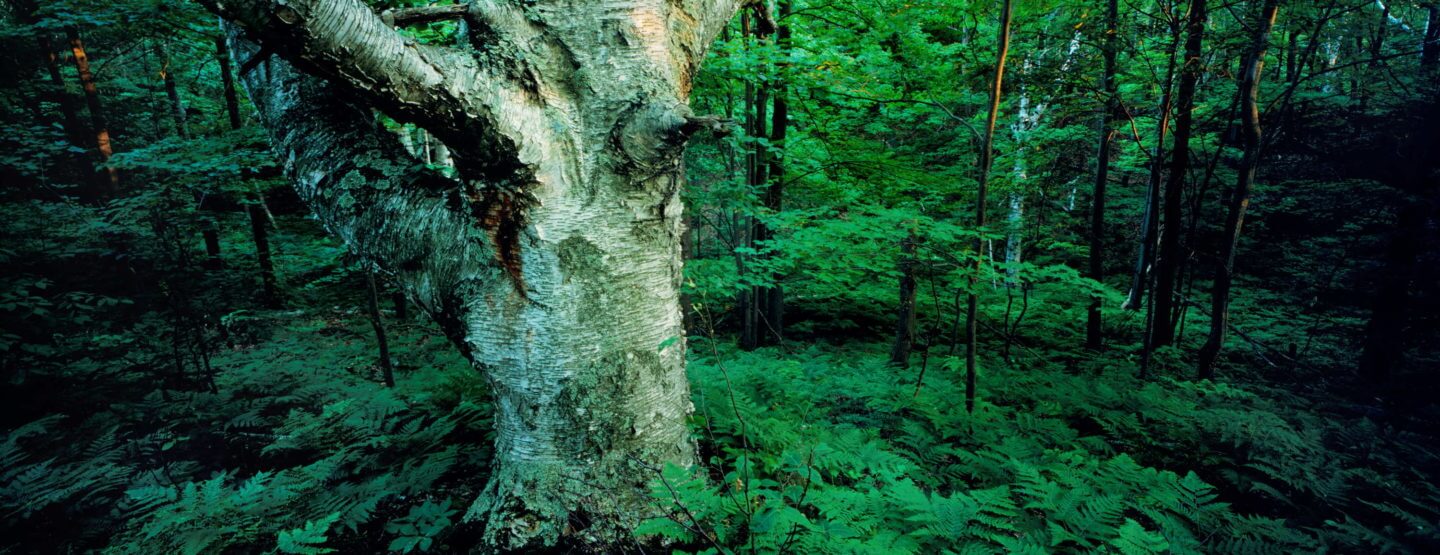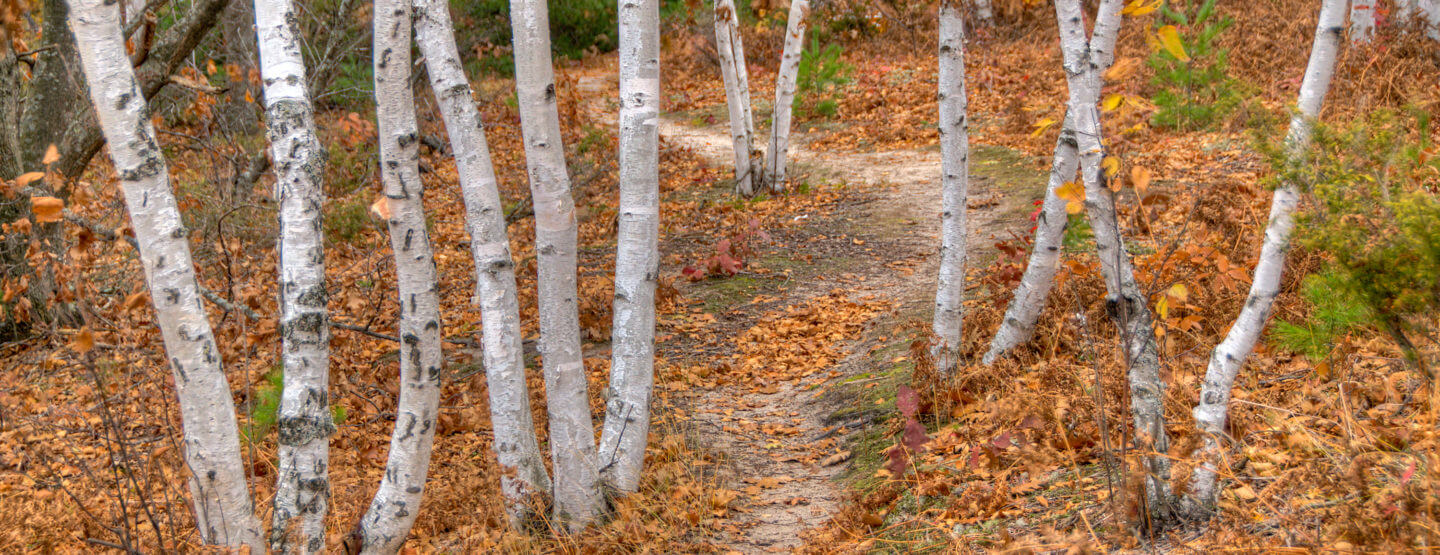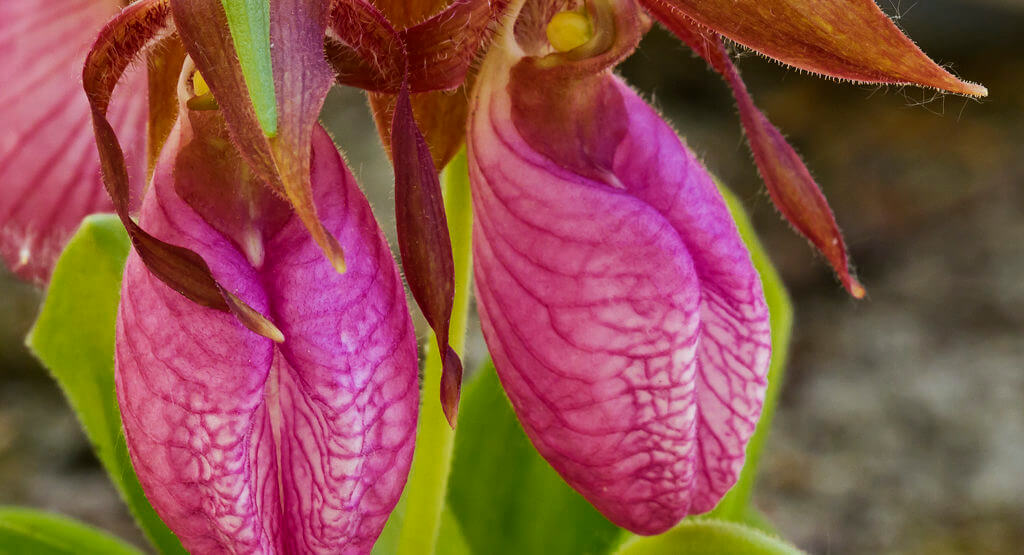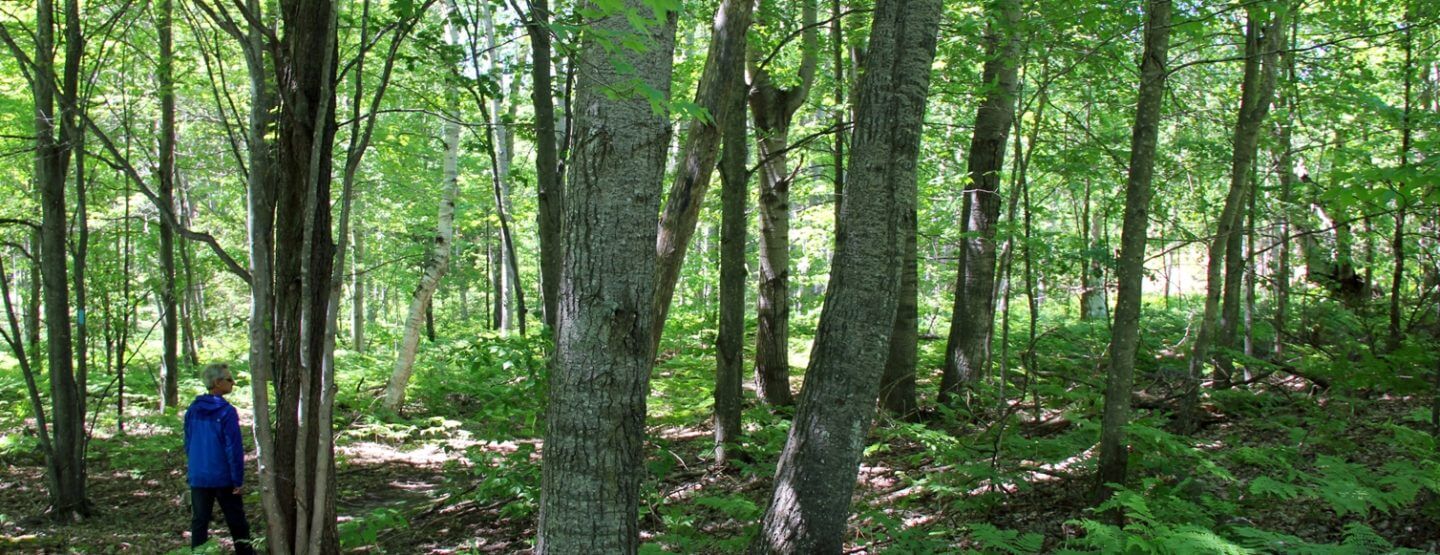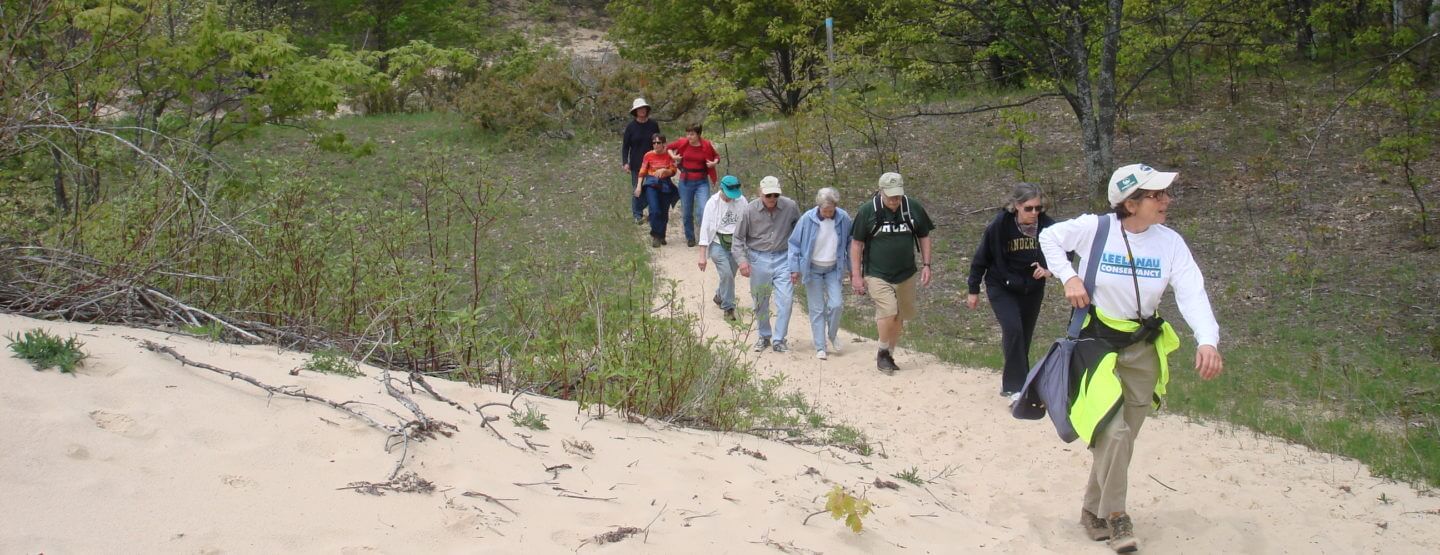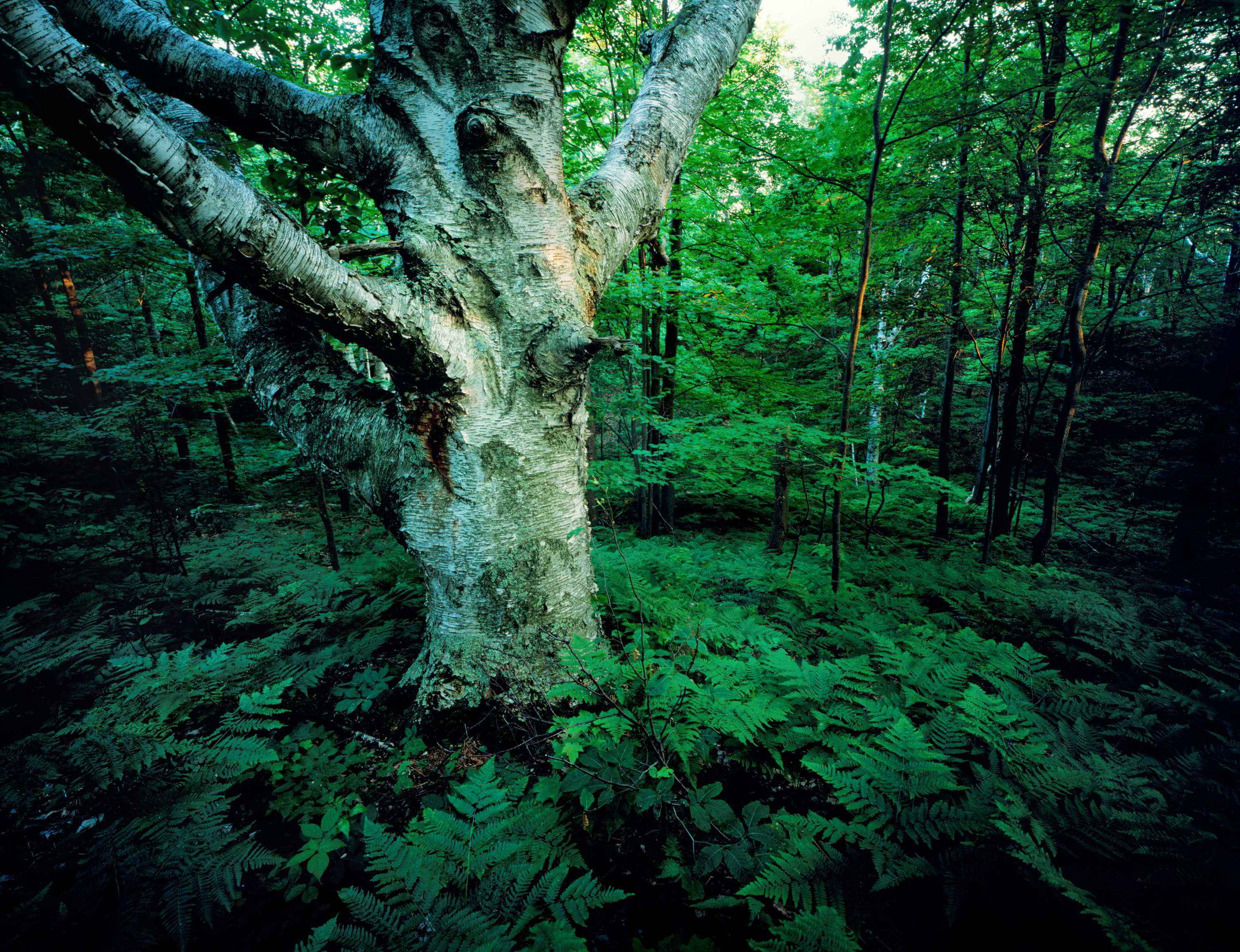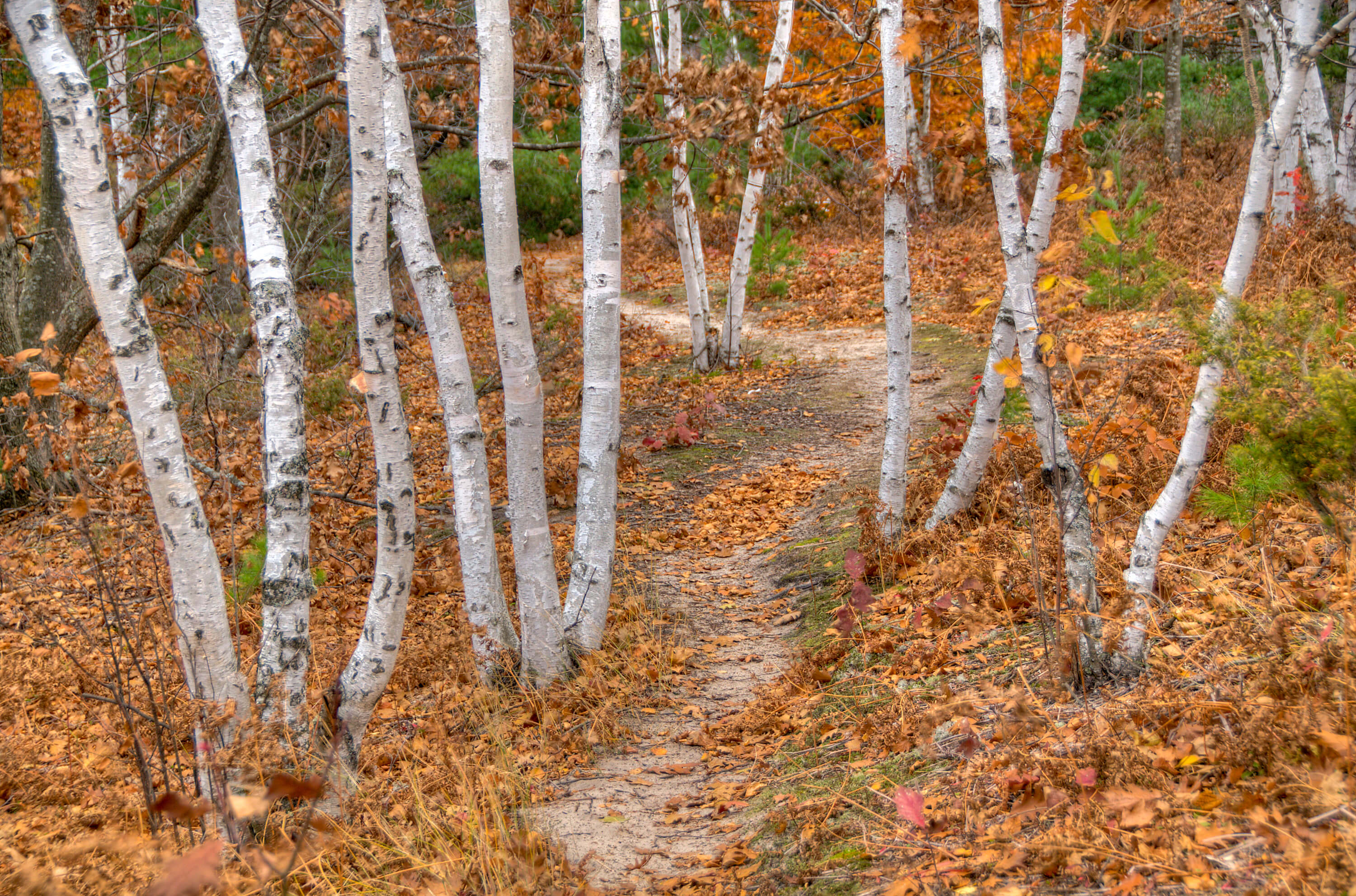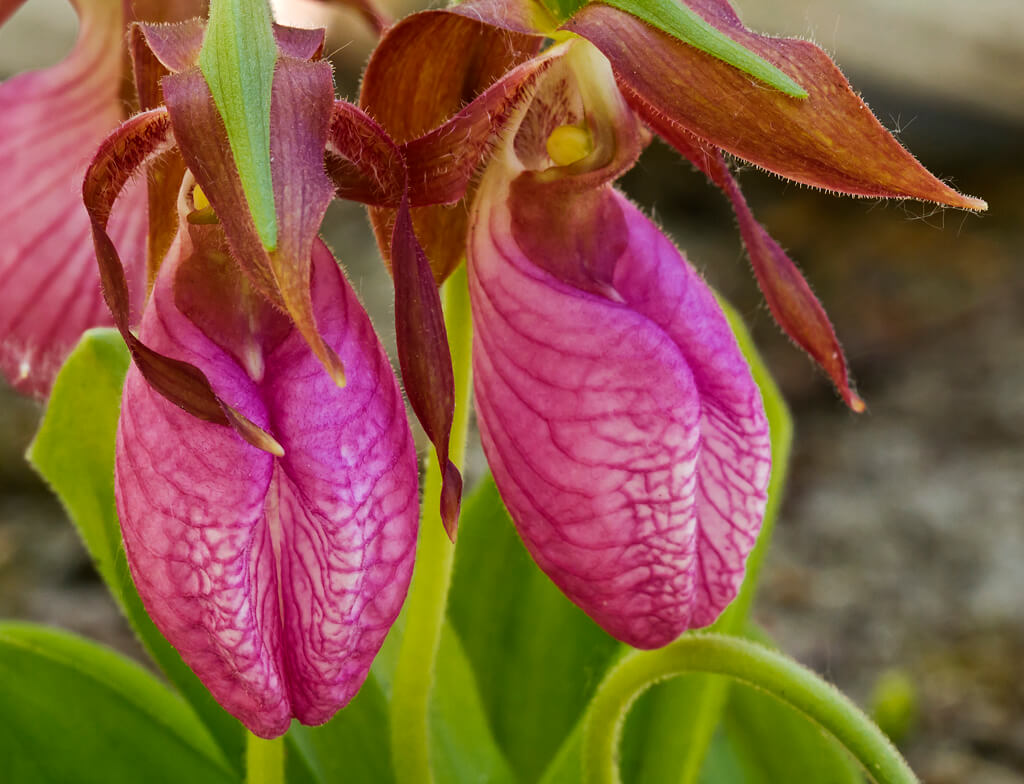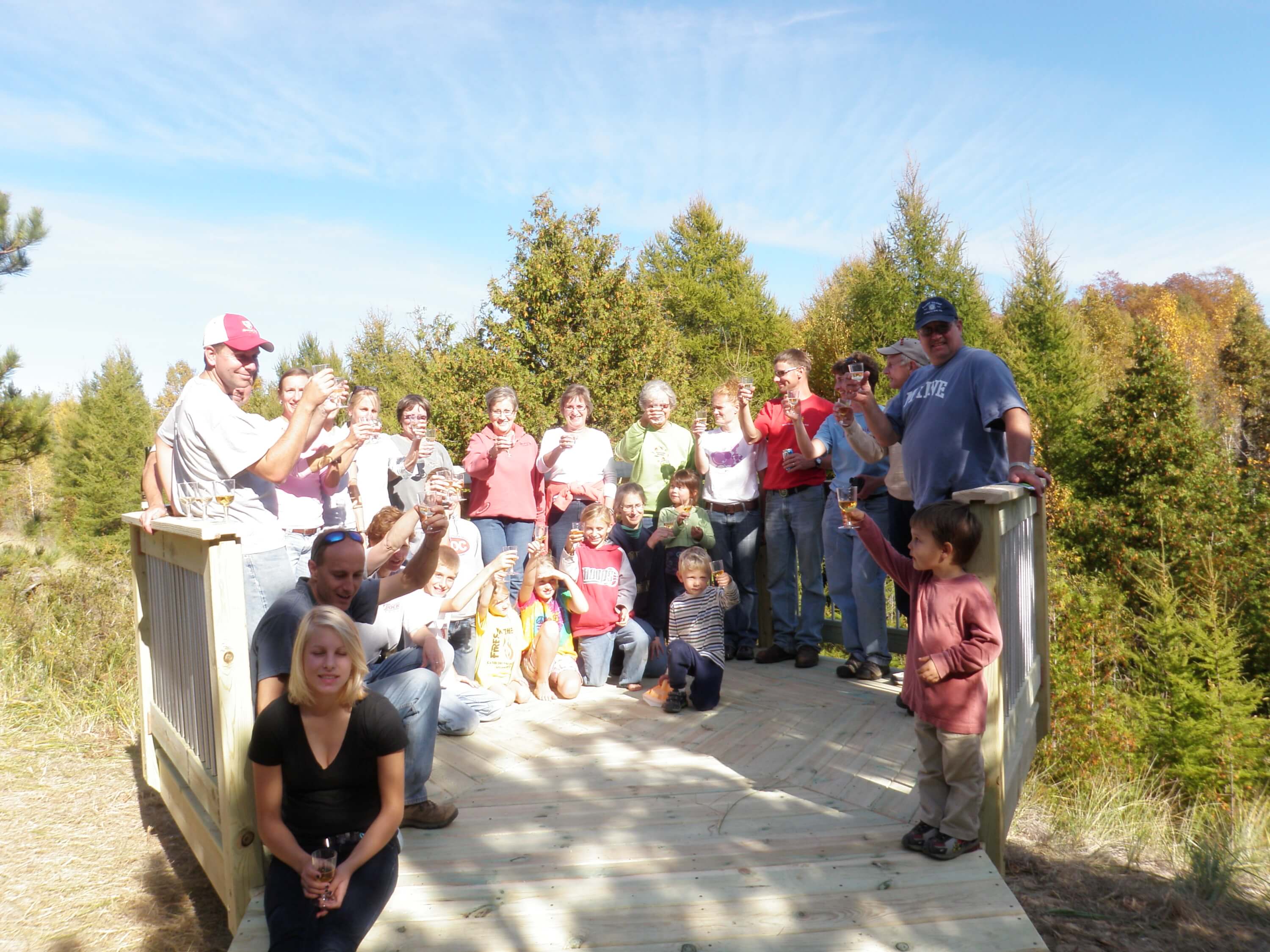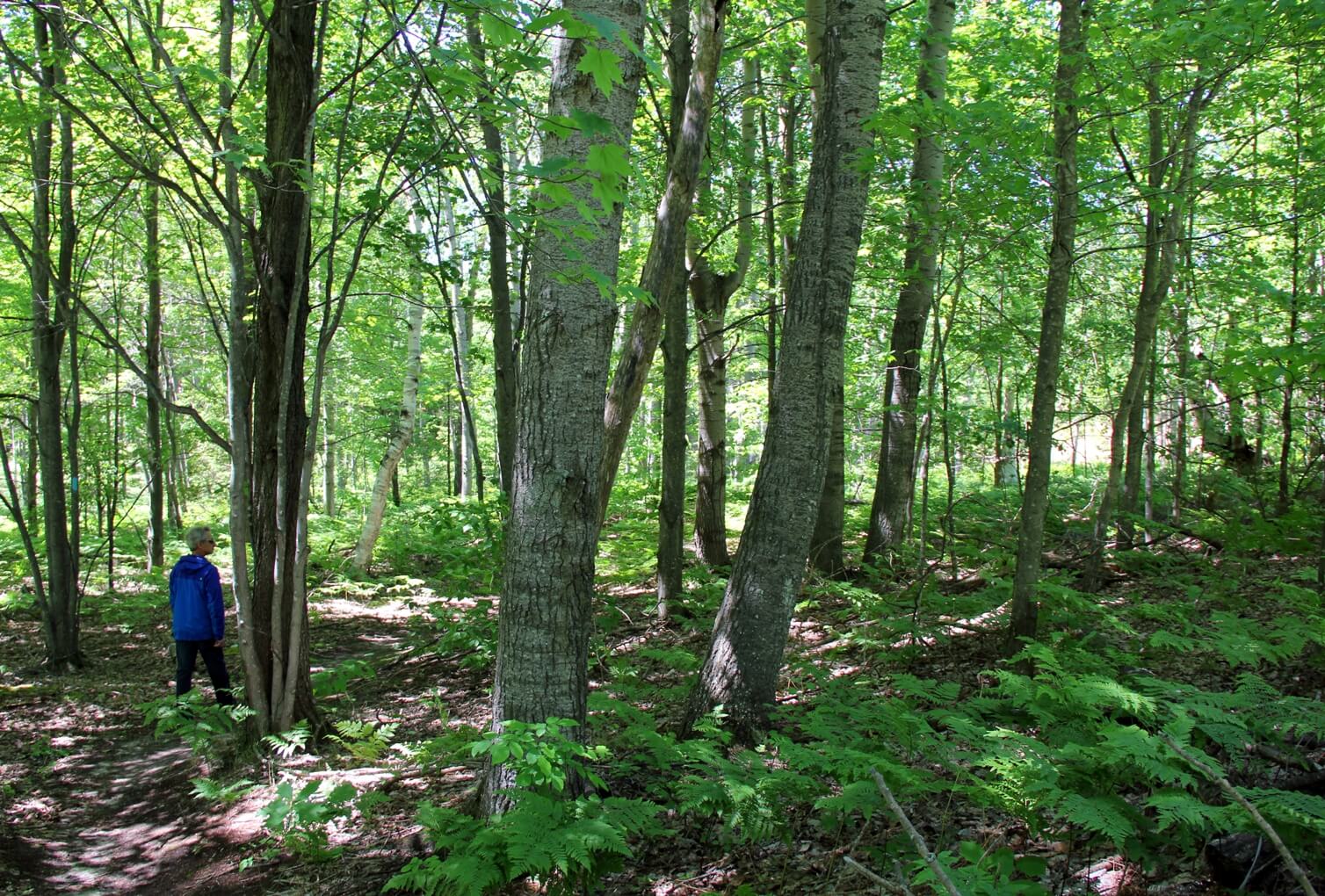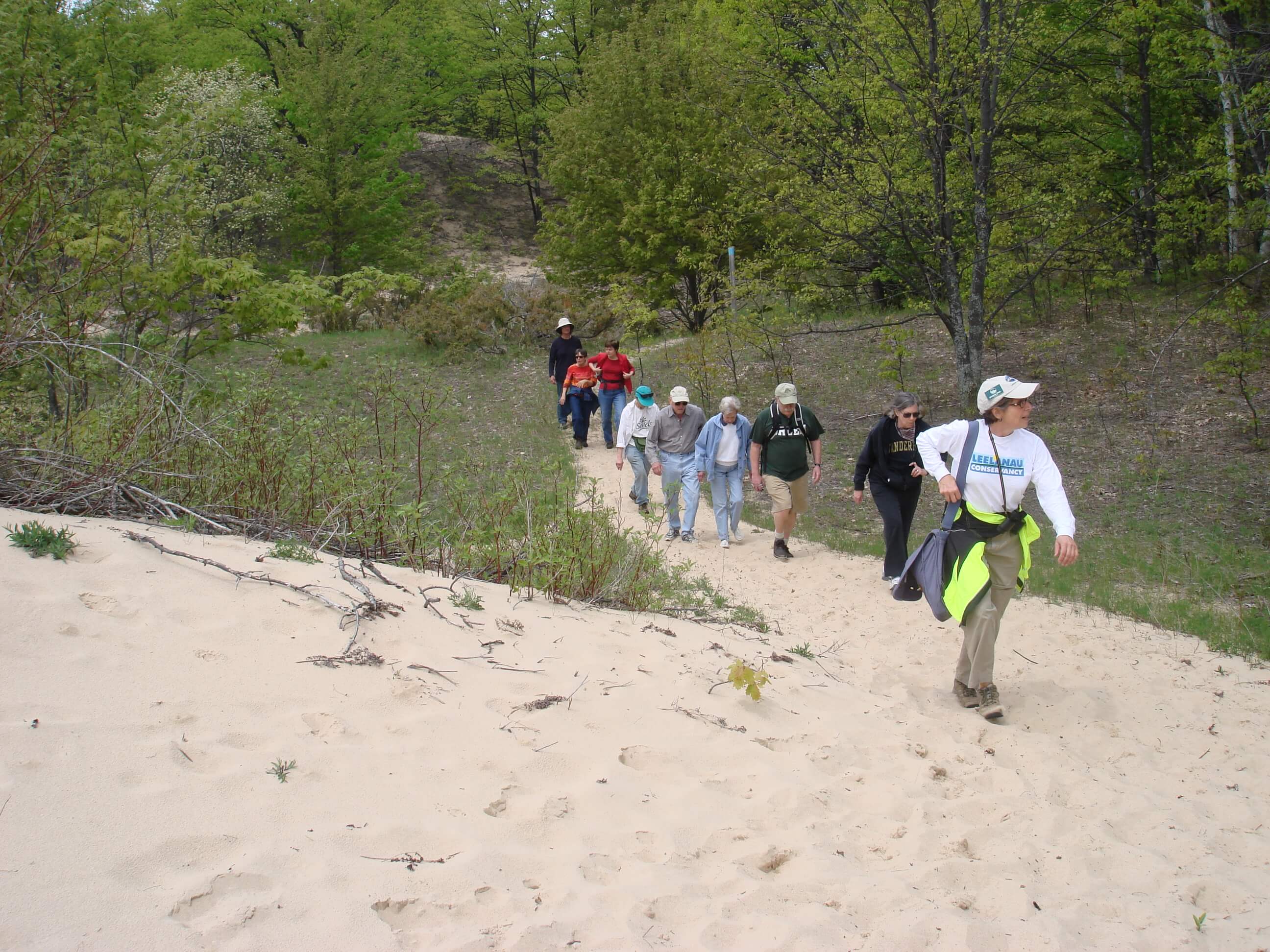Looking for a Geology Lesson? It’s Here on One of Our Largest and Most Diverse Properties
The story of dune succession plays out here, with dunes of all types present at this dynamic and ecologically diverse natural area. There are forested stabilized dunes as well as dunes that continue to shift and change. There are even blowout dunes—green islands in a sea of sand. Pockets of unusually old white birches are present in the dips of the dunes while pink lady slippers bloom in profusion along sandy trails. This natural area protects much of Houdek Creek, the largest tributary flowing into Lake Leelanau. A diverse array of wetland and upland ecosystems provides abundant wildlife habitat.
Houdek Dunes’ signature is its stands of bright, healthy white birches – many over a century old. Their advanced age is highly unusual for this transition species. Woodland pockets created by dips in the dunes shelter the birches from the wind and allow them to thrive.
Note that the stands of quaking aspen at the top of the stairs near the information kiosk are clones. One of several aspen groupings throughout the property, they share a root system and identical genetic makeup. The tree takes its name from the spinning movement of its leaves. In a breeze some leaves show pastel and others expose darker green tops. The stem shape causes this flip-flopping – a design that likely evolved to limit the leaves’ sun exposure.
Along the dunes’ southeast boundary flows Houdek Creek, the largest tributary flowing into North Lake Leelanau. This creek can be viewed from an observation platform, but we ask hikers not to visit its fragile, sandy shore, which would compromise the health of this pristine stream.
But these wetlands are just a part of what’s here. A quarter mile inland from Lake Michigan, the dunes form a border between Houdek Creek and upland hardwood forest. This barrier includes active and stabilized dunes, open, pitted, and perched sand dunes. There are even blowout dunes – where all the sand is blown out around a large clump of vegetation, leaving a green island in a sea of sand.
Cottonwood, red pine, white birch, red-osier dogwood, and sand-reed grass flourish in these open spaces. Among the hardwoods, you’ll find aspen and red oak, with beech and maple in the sheltered valleys. Note the striped maple’s large leaves and white striped bark (thus its nickname, the “Michigan State” tree).
Clearcutting and constant buffeting by Lake Michigan’s wind and waves never gave these barrier dunes and their forest a chance to stabilize. Most of the sand continues to shift with the elements, much as it has since the dunes’ formation during the Lake Nipissing era.
“Whenever I reach the top of the stairs at Houdek Dunes Natural Area, I am amazed at the beauty and serenity of this special place. From the amazing vistas of the barrier dunes that make up most of the landscape to the unique hardwood forest featuring some of the largest white birch trees in northern Michigan, few will miss the wonderful message that nature provides.”–Tom Dunfee, retired Board Chairman and former Docent
Trails
The trail system here takes in an easy to challenging 3.3 miles. The 3/4 and 1- 1/2 mile loops can be covered in 2 hours. Moderate hiking includes sandy trails, stairs, and slopes. Info kiosk at trail head, benches at ancient maple. Beautiful octagon-shaped deck and sitting area overlooking Houdek Creek, built and donated by the Houdek Family. Note: there is a significant stand of poison ivy near the entrance. Take care to stay on the wide trail.
History
This land was owned and partially farmed by the Houdek family over a century ago. Duneside apple trees remain from an old orchard, and fence posts indicate that the Houdeks probably grazed cattle here. The Conservancy acquired Houdek Dunes from a developer who considered building a golf course here. With the help of many, the Conservancy was able to preserve forever these 330 acres that include a mile of frontage on scenic M-22 and 4,500 feet along Houdek Creek.
Protected by the Conservancy in 1998, the property now provides opportunities for the public to quietly recreate, learn and revel in the unique habitats of Houdek Dunes. The Houdek Dunes sand was derived from glacial sediments that were exposed about 4,000 years ago, when the ancient Lake Nippissing receded. The sand was blown to form the dunes we see today, which illustrate the various stages of ecological succession. Succession is the process of change in the plants and animals living in an ecological community over time. From the trail, you’ll see examples of active blowout dunes, woodland pockets sheltering the giant white birch trees, and mature forested back dunes.
Features
• Mature white birches and striped maple trees
• Ancient maple tree with benches
• Spring wildflowers – pink lady slippers
• Great Lakes barrier sand dunes
• Fragile Houdek Creek, seen from the observation platform
• Blackburnian Warbler, Scarlet Tanager, Baltimore Oriole, Brown Thrasher
• Fall colors- aspen, birch, maple, tamarack
• Animal tracks in the snow and sand
Houdek Dunes Story Map
Click here to see a story map of how Houdek Dunes Natural Area was created over time. See detailed maps of when the various parcels were protected along with beautiful photos and narration about what makes makes this place so unique and ecologically significant.
Plants
A Houdek FQA and Summary is available here. The FQA, or Floristic Quality Assessment, tells the story of the types and quality of flora at Houdek Dunes Natural Area.

